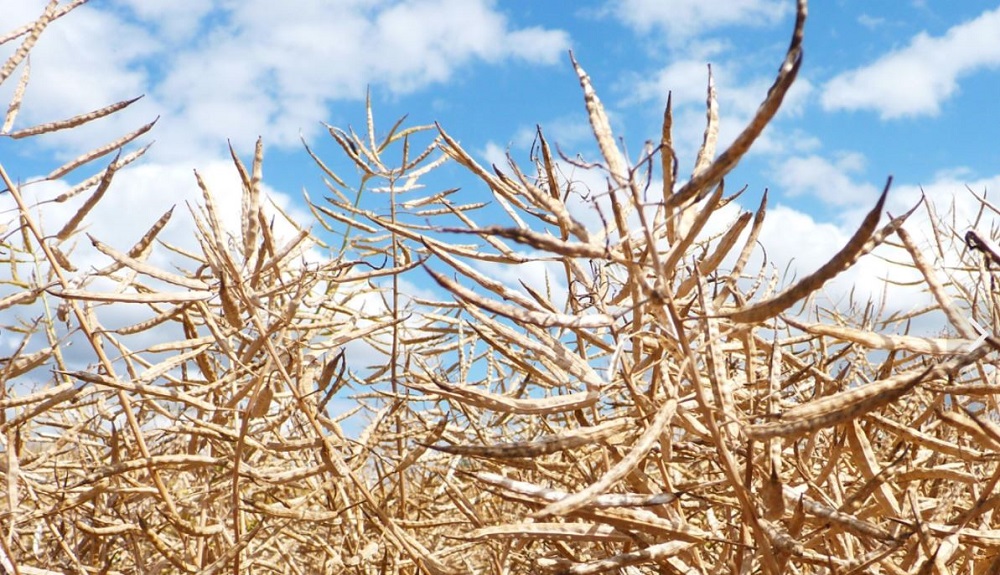- Home
- Knowledge library
- Senescence and harvest of oilseed rape (GS9)
Senescence and harvest of oilseed rape (GS9)
Uneven ripening in oilseed rape makes the crop a challenge to harvest. Measurements of crop variability across the field can inform the best approach to harvest, including the right technique and the timing.
Oilseed rape growth guide home
Oilseed rape senescence (GS9)
As pods and seeds ripen, senescence of the crop continues. By GS97, plants are completely dead and dry. By GS99, the crop is ready to harvest. At this stage, 35% of the crop’s biomass is in the stem and 30% is in the pod wall. Even in semi-dwarf varieties, 33% of the biomass is in the stem. Most of the remaining dry matter (about 35%) is contained within the seeds. Seeds also contain about 50% of the crop’s total energy content, with most of it stored within the energy-rich oil.
Harvesting oilseed rape
The indeterminate growth of oilseed rape can make the crop a challenge to harvest. Such growth results in uneven ripening between the early- and late-formed branches. Three main harvesting techniques are available: desiccation, swathing and direct combining. The best method depends on a range of factors, including location, stage of ripening, lodging, weed levels, weather and disease levels. Timing is everything, as early desiccation or swathing reduces the seed-filling period.
In the RL, the winter oilseed rape list includes pod-shatter resistance data
Desiccation (with glyphosate)
Appropriate use of glyphosate pre-harvest can aid harvest and protect grain quality in a range of cereal, oilseed and pulse crops. Pre-harvest glyphosate applications are more common in oilseed rape crops, compared to cereals. As stewardship of this active ingredient is particularly important, it is essential to minimise preventable residues (in water and produce) and the risk of resistance occurring in UK weed populations.
Pre-harvest glyphosate: best practice in oilseed rape
Swathing
Crops can be swathed around six weeks after the end of flowering. This is when the seeds in the top third are green and green/brown, those in the middle third are green/brown and those in the bottom third are dark brown/black. It suits exposed sites and upright or leaning crops, but not lodged or leaning short crops. Crops should be largely weed-free and stubble must be at least 20–30 cm to raise the crop off the ground.
Direct combining
This is the lowest cost and avoids wheeling damage. However, crops must be uniform and largely weed-free. This approach can delay harvest and result in higher moisture content in the harvested seed.


.PNG)

 GNP.jpg?v=637780322720000000)